




| Ruddy Turnstone (Arenaria interpres (Linnaeus, 1758)) |





|
|
Scientific name: Arenaria interpres (Linnaeus, 1758) Common name: Ruddy Turnstone French name: Tournepierre à collier Order: Charadriiformes Family: Scolopacidae Size: 21 to 24 cm, 80 to 110g. Habitat: In summer, coastal tundra. In winter, rocky seashores and sometimes inland lakes and river banks. Food: Molluscs, crustaceans and sea worms. Sometimes seeds and insects. Nesting: The nest is built on the ground in a slight depression and is lined with some grasses. It is reused by the same birds years after years. Females lay 4 eggs in June. Migration: Very long distance migrant, from the Arctic circle in summer to tropical Africa, South Africa, South America and Australia in winter. Geographic area: High Arctic from late May to early August. Almost all southern seashores in summer. A few birds overwinter in Bretagne (France), you can observe great number of birds during migration especially in late summer. |
The Ruddy Turnstone is a small chunky bird with a coloured plumage: black, white and red-brown. The back and the chest are black, the underside is white. The head and the neck are black and white. The wings and the tail are red-brown, black and white. The bill is short and black. Its name comes from the fact that it does return stones or seaweed to look for invertebrates. |
| [To know more about the Ruddy Turnstone] [Next picture] [Top] |
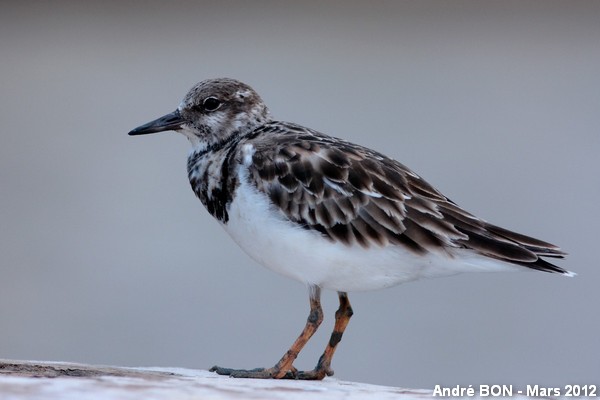
|
This picture was shot in Kourou, next to the departure jetty for boats going to the Iles du Salut. I like this picture shot outdoor, it looks like a picture shot in a studio with a soft light and a uniform background. |
| [To know more about the Ruddy Turnstone] [Next picture] [Previous picture] [Top] |
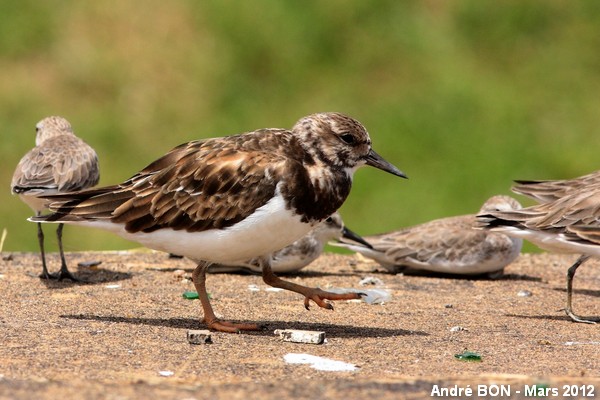
|
I have observed many Ruddy Turnstones in the city of Cayenne, next to the market place. They were accompanied by Semipalmated Sandpipers. |
| [To know more about the Ruddy Turnstone] [Next picture] [Previous picture] [Top] |
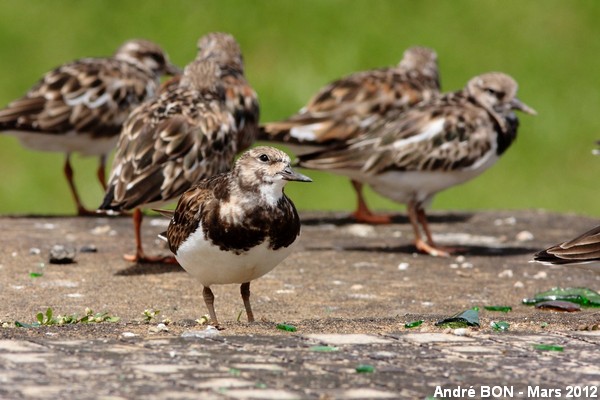
|
The Ruddy Turnstones observed in Cayenne during this month of March were certainly ready to fly northwards. |
| [To know more about the Ruddy Turnstone] [Next picture] [Previous picture] [Top] |
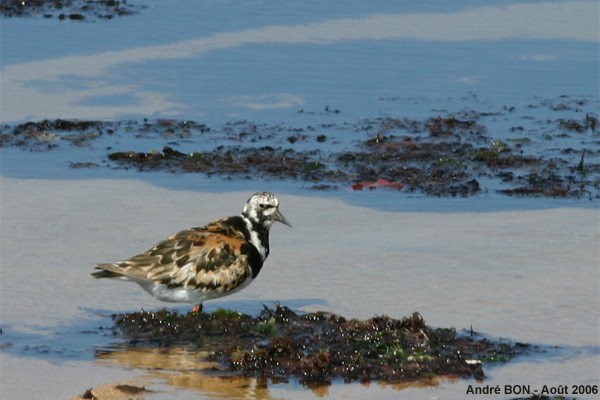
|
Next time I will try to see one Ruddy turnstone turning a stone. |
| [To know more about the Ruddy Turnstone] [Previous picture] [Top] |
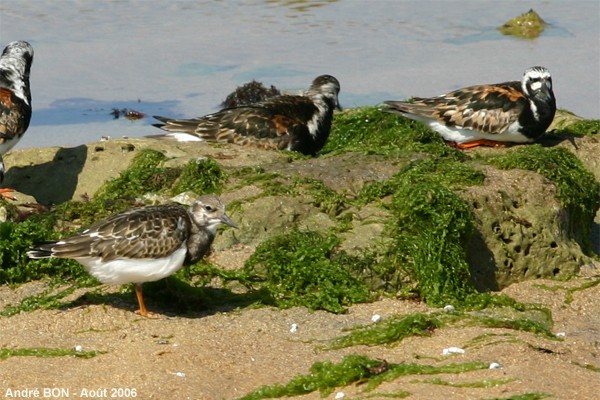
|
This August, at low tide, many Ruddy Turnstones are looking for food without paying attention to me. |